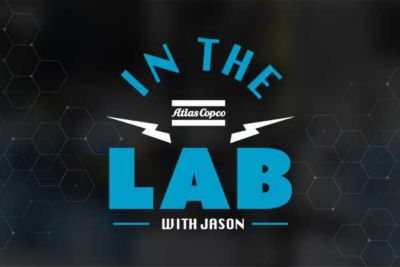With over 3 million holes in a single aisle aluminum commercial aircraft, it is not surprising that drilling sometimes doesn’t turn out right the first time. And in an industry where safety is the number one priority, there is no room for errors. The best way is to simply avoid mistakes in the first place. But if they do occur, there are ways to detect and address them before they become a serious problem.
Drilling a hole for an application in the aerospace manufacturing industry is not easy. Instead, it is a critical and precise process where different materials, operational conditions and technical requirements come together to form a serious challenge.
Even the smallest geometrical defect in a drilled hole can compromise the performance and safety of the aircraft as well as the reputation of the customer. It is therefore crucial to better understand what can go wrong and take actions so that they, as far as possible, can be avoided. But if mistakes do happen, it is important to identify and address them as soon as possible before the time, financial and material costs become significant.

What to look out for
The quality service department plays an important role in upholding the precision and quality of all drilled holes during the process of manufacturing an aircraft. They are responsible for ensuring that the tolerance of the drilled holes is within stipulated requirements. These criteria vary depending on the materials used and encompass essential factors such as the minimum and maximum hole diameter, hole perpendicularity, and overall hole quality. The latter including considerations such as roughness, burn marks affecting material properties, scratches, material deficiencies, straightness, barreling, and delamination of carbon fiber.
One significant issue that can arise during drilling is runout. This causes ovality in holes when the drill bit deviates from a perfectly straight rotation around its axis. Eliminating this defect completely is challenging, but minimizing it is crucial to achieve the desired hole characteristics and quality. Excessive runout can affect the roundness of the final hole. There are various factors that can influence runout. The quality of the drill bit, the chuck or collet used, the condition of the drill machine, and the expertise and experience of the operator.

Detecting, addressing, and recording hole quality deviations
Despite the very best efforts, mistakes and deviations do occur when drilling holes. When this does happen there are a multitude of different actions that are necessary to initiate depending on the severity and criticality of the issue. The range of possible repair options vary from simple and cost-effective solutions to more extensive efforts which will require additional time and effort. Significant repairs to faulty drilled holes can involve exemptions that need to be communicated to the customer.
All hole defects are meticulously recorded in the aircraft book, which accompanies the aircraft throughout its lifespan. This record can influence negotiations and potentially, depending on the severity of the identified issue, impact the price of the aircraft.

Proactive quality assurance
To prevent common drilling defects there are several key proactive measures to consider and implement.
- Invest in high-quality tools and equipment
- Employ well-trained, skilled, and experienced operators
- Establish a robust quality control system
- Regular maintenance and calibration of drilling equipment ensuring optimal performance and accuracy
- Proactively identifying and addressing potential issues during the aircraft design phase to prevent future potential hole defects
You might be interested








